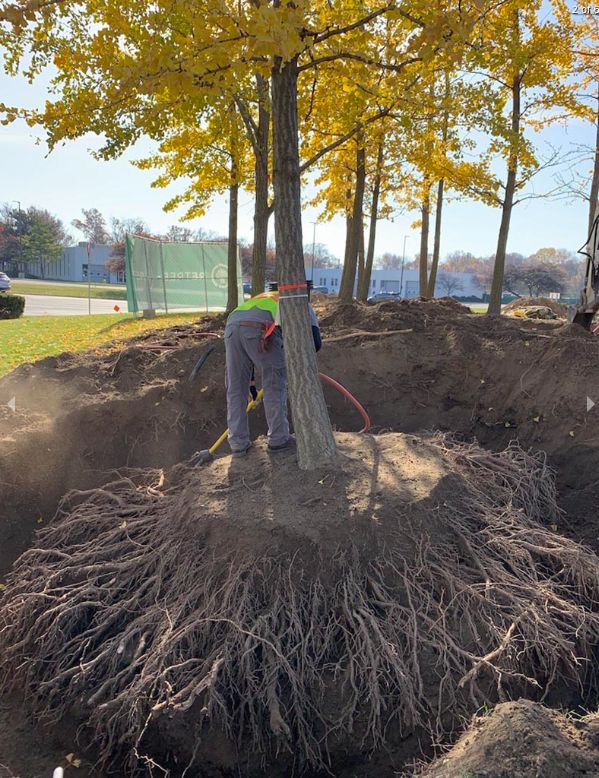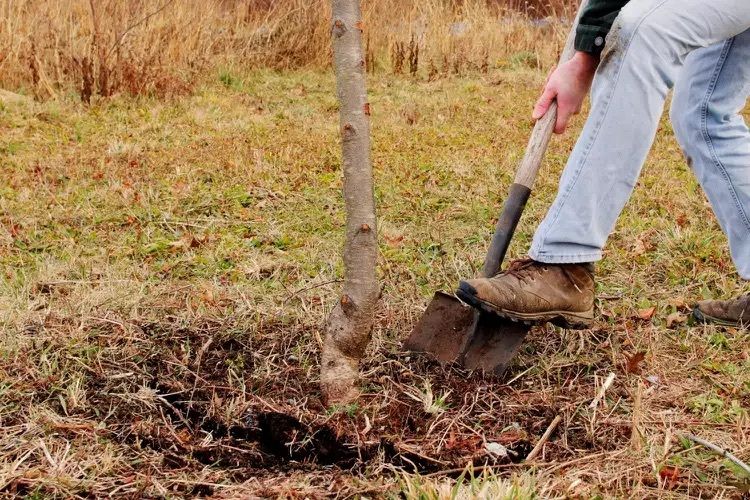Transplanting a tree can be a good way to move a beloved tree to a new location or to rescue it from adverse conditions. However, it’s also a delicate process that requires careful planning, proper timing, and attentive care to increase the tree’s chances of survival. Understanding what’s involved in tree planting and transplanting gives the tree the best possible start in its new home.
Things to Consider Before Transplanting Trees
– Size and Age of the Tree: The larger and older a tree is, the more challenging it becomes to transplant. Mature trees have extensive root systems that may not transplant easily, and disturbing their roots can lead to stress and even death. Younger, smaller trees are generally more adaptable and recover faster after transplanting.
– Expected Weather Conditions: Trees should ideally be moved during cool, overcast days, which help minimize stress caused by sun exposure and heat. Avoid transplanting on very hot or very cold days, which can make the tree’s adaptation to its new environment more difficult.
– Site Conditions: The new location should be suitable for the tree’s long-term health. Assess the soil type, drainage, sunlight exposure, and water availability of the new planting site. Ensure the site has enough space for the tree’s canopy and root growth, as crowding can lead to future problems.
– Equipment and Professional Help: Moving larger trees may require specialized equipment like tree spades or cranes to lift and transport the tree without damaging its root structure. For transplanting mature trees, it’s best to hire a professional tree care service. They have the expertise and equipment to move trees with minimal risk to both the tree and your own safety.

Best Time to Transplant Trees
In most climates, the ideal time to transplant trees is fall and early spring.
– Fall Transplanting: Cooler fall temperatures help the tree conserve water and avoid the stress of hot summer weather. The soil is still warm enough for roots to grow, allowing the tree to establish a stable root system before winter dormancy fully sets in. The best time in the fall is just after the leaves have dropped but before the ground freezes.
– Spring Transplanting: Early spring, before the buds begin to swell, is also good time to transplant. At this time, the tree’s energy is focused more on root growth than foliage, giving the roots a chance to settle in the new soil before the growing season begins. Trees transplanted in spring have the benefit of a full growing season to become established.
Why Transplant Trees When They’re Dormant?
Transplanting trees during dormancy minimizes stress on the plant. During this period, a tree’s metabolic activities slow down, meaning it requires less water and nutrients than it would during active growth. Because the tree is not producing leaves or flowers, it can focus its energy on healing its roots and reestablishing itself in the new location. By transplanting when the tree is less active, you reduce the risk of shock, which can harm tree health and reduce survival rates.
How to Dig a Tree for Transplanting?
- Mark the Tree’s Drip Line: Start by marking the tree’s drip line, which is the outer circumference of the tree’s branches. This gives you a guide for the area you’ll need to dig around to include most of the root system.
- Dig a Trench Around the Drip Line: Dig a circular trench around the drip line, ideally 12-18 inches deep. For younger trees, a shovel may be sufficient, but for larger trees, consider using professional equipment or seeking assistance from a tree care professional.
- Lift the Tree Carefully: After digging the trench, work your way underneath the root ball, being careful not to damage the roots. Once it’s free, wrap the root ball in burlap or a tarp to keep the roots moist and secure during transportation.
- Transport the Tree: Keep the tree upright and protected from excessive sun and wind. If you’re moving a larger tree, use a tree spade or crane, as these tools minimize root disturbance and reduce the risk of injury.

How to Plant a Tree in a New Location?
- Prepare the New Hole: Dig a hole that is twice as wide and the same depth as the root ball. The wider hole allows roots to spread out and establish more quickly.
- Position the Tree in the Hole: Place the tree in the hole so that it sits at the same depth it was previously planted. Avoid planting the tree too deep, as this can suffocate the roots.
- Backfill with Soil: Gradually backfill the hole with soil. Gently tamp down the soil to help eliminate large air pockets around the roots.
- Add Mulch and Water: After planting, add a layer of mulch around the tree, keeping it a few inches away from the trunk. Water the tree deeply to help the roots settle.
- Support if Necessary: If needed, stake the tree temporarily to keep it stable until its root system reestablishes in the new soil.
There is no guarantee of survival
It’s important to remember that transplanting a tree doesn’t come with a guarantee for survival. Only move a tree if necessary and be prepared for potential challenges. After transplanting, monitor the tree’s health regularly and provide ample water, especially during its first few months. With proper care, the transplanted tree has a better chance of adapting and thriving!





